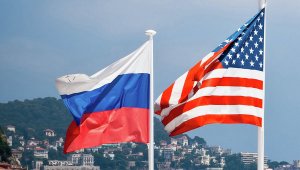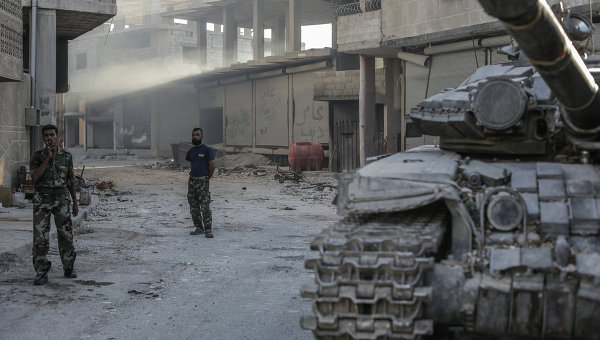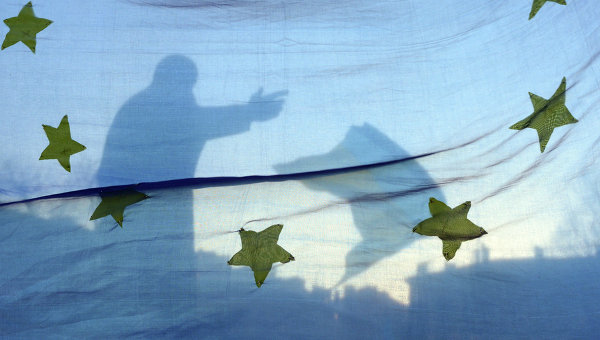Gilbert Doctorow, Ph.D.
Gilbert Doctorow is a Research Fellow of the American University in Moscow.
Events in and about the Ukraine are developing with blinding speed and as we peruse the media incoming information has far outstripped comprehension. One contributing factor to the confusion is the prevailing amnesia of news purveyors, whose frame of reference tends to go back a week or two. Alternatively, those few seeking depth would take us back in time centuries to find the engines driving today’s daily events.
In this brief essay, I propose a time frame that I believe is more relevant, namely the past decade, going back to the period just before the Orange Revolution, and I intend to focus attention on the seeds for what was last week’s top story on Ukraine: the decision of its government to suspend talks on signing a Free Trade agreement and a political association with the EU. That came to a head on Friday evening with the closing of the Eastern Partnership Summit in Vilnius, when the European Union leadership stood before the television cameras with two black eyes over its failed bid to lure Ukraine out of the Russian sphere of influence and Customs Union and into its own civilizational embrace.
The outcome of the summit was described by some commentators as a clear victory for Russia; others saw it as a ‘Pyrrhic victory’ which would cost Russia dearly given Ukraine’s desperate need for financial injections to stay solvent. I maintain that both positions miss the point of Ukraine’s decade long instability as it totters between two nearly equally populous domestic linguistic, industrial, and geographic groupings: Left-Bank, pro-Russian, Right-Bank –pro-European. The Orange Revolution and its overturn at the ballot box bringing the current President to power are precisely indicative of this divisiveness which is unlikely to be resolved in the near term, whatever the outcome of the ongoing struggle for power on the streets of Kiev, Lviv and other Ukrainian cities. Into this very unstable situation, both Russia and the EU have marched in headlong pursuit of their own geopolitical and economic objectives, exacerbating willy-nilly the local tensions.
Our media primarily call attention to Russian arm-twisting. Indeed, there is no denying that the Kremlin has deployed both sticks and carrots to prod the Ukrainian leadership into seeing where its interests lie.
However, from the very beginning of its Eastern Partnership program the EU has been up to the same game, only with no sticks and a serious deficit in carrots. And that deficit reflects the lack of unanimity on the Eastern Partnership among Member States and the opportunistic and superficial way the whole program was launched in 2009 by the Commission.
The immediate context for the launch of the Eastern Partnership program was the Russian-Georgian War of August 2008, during and after which the United States unleashed the fiercest anti-Russian information campaign since the depths of the Cold War, a campaign which was picked up with alacrity by several EU Member States. The second driver was the Russian-Ukrainian gas dispute of January 2009. The cutoff of supplies from Russia to several of the newer Member States which was a byproduct of that conflict greatly embarrassed the Commission by highlighting what the US had long criticized as Europe’s over-dependence on Russian gas.
In fact, the launch of the Eastern Partnership in Prague in May 2009 ran in parallel with a high level meeting to promote the Southern Corridor, a proposed gas pipeline that would bring Caspian Basin natural gas to Europe by a route bypassing Russia and so further diversify the Continent’s energy sources. Both the Partnership and the Nabucco project, which was the core of the Southern Corridor have moved in sync ever since, straight up to last Friday’s Summit in Vilnius. Hence, the presence of Azerbaijan at the Summit despite its falling afoul of all the EU’s good governance and pro-democracy guidelines, and despite its having delivered the coup de grace to Nabucco by promoting its own pipeline to Western consumers.
In simple English, both intertwined projects were intended to clip Russia’s wings. The pipeline speaks for itself. The Partnership with allegiance of Ukraine as its greatest prize was defined by its sponsors, the Member States Poland and Sweden. Both had their own tradition of competing with Russia for geopolitical control of East Central Europe going back to the 17th century. The initiative had only tepid support from the core Member States. At the founding summit in May 2009 four Member States did not even send their heads of state or government. In line with this, the new money put up by the EU to induce the target countries of the Partnership to sign up was paltry: 300 million euros of new money spread over 4 years to 2013 and among 6.countries. Similarly, the EU only put up seed money for the Southern Corridor/Nabucco in furtherance of feasibility studies. It assumed the markets would find the investment money, an assumption that was dashed as Europe entered steep recession and commercial credits for large projects evaporated.
In the time since 2009, the EU never put its money where its mouth was on the Eastern Partnership, so that today, in 2013, it could offer only aspirational political benefits to Ukraine’s population in the form of eased visa regime, not hard euros in loans and grants to ease the suffering of present recession and future worsening of salaries and benefits if the restructuring of industrial standards and economic reforms prescribed are implemented.
In the time since 2009, leadership of the Eastern Partnership program has changed hands among Member States. Poland and Sweden found accommodation with Russia over Nord Stream, over Katyn, over the forestry industry and other contentious issues which had separated them. The new shock troops of the Eastern Partnership became the Baltic States, meaning in particular Estonia and Lithuania, whose President Dalia Grybaurskaite hoped and expected to bring in the biggest catch, Ukraine, during her 6 month mandate at the head of the rotating Council presidency. Other EU members remained less ardent. David Cameron no doubt spoke for many when in the run-up to the Summit he made clear his displeasure over all the indigent, tired and huddled masses from the East washing up on his shores and looking for handouts. In this sanctimonious and parsimonious spirit, no real money was ever offered to Ukraine.
One of the stock in trade accusations against Russia made by its detractors in the EU is that it plays the Member States off against one another by pursuing bilateral relations with its key trading partners, whom it grants enticing preferential deals in gas and natural resource exploitation. This is described as a tactic of ‘divide and conquer.’ But as we saw last week in the steadfast refusal of the EU Commission to countenance the appeal for 3 way EU-Ukraine-Russia talks put forward by Viktor Yanukovich with backing from Vladimir Putin, the EU is playing exactly the same game in reverse.
So, is there any genuinely a win-win situation over and in Ukraine to be had?
If we dig in the recent past, we find that one of the most contentious issues in Russian-Ukrainian-EU relations, the ownership and control of the gas storage and transmission system in Ukraine through which the lion’s share of Russian gas passed to Western Europe since Soviet times found a tentative solution in precisely a three-way consortium that was approved shortly before the Orange Revolution. It was subsequently rejected out of hand by the incoming President Yushchenko as an attack on Ukraine’s sovereign property.











